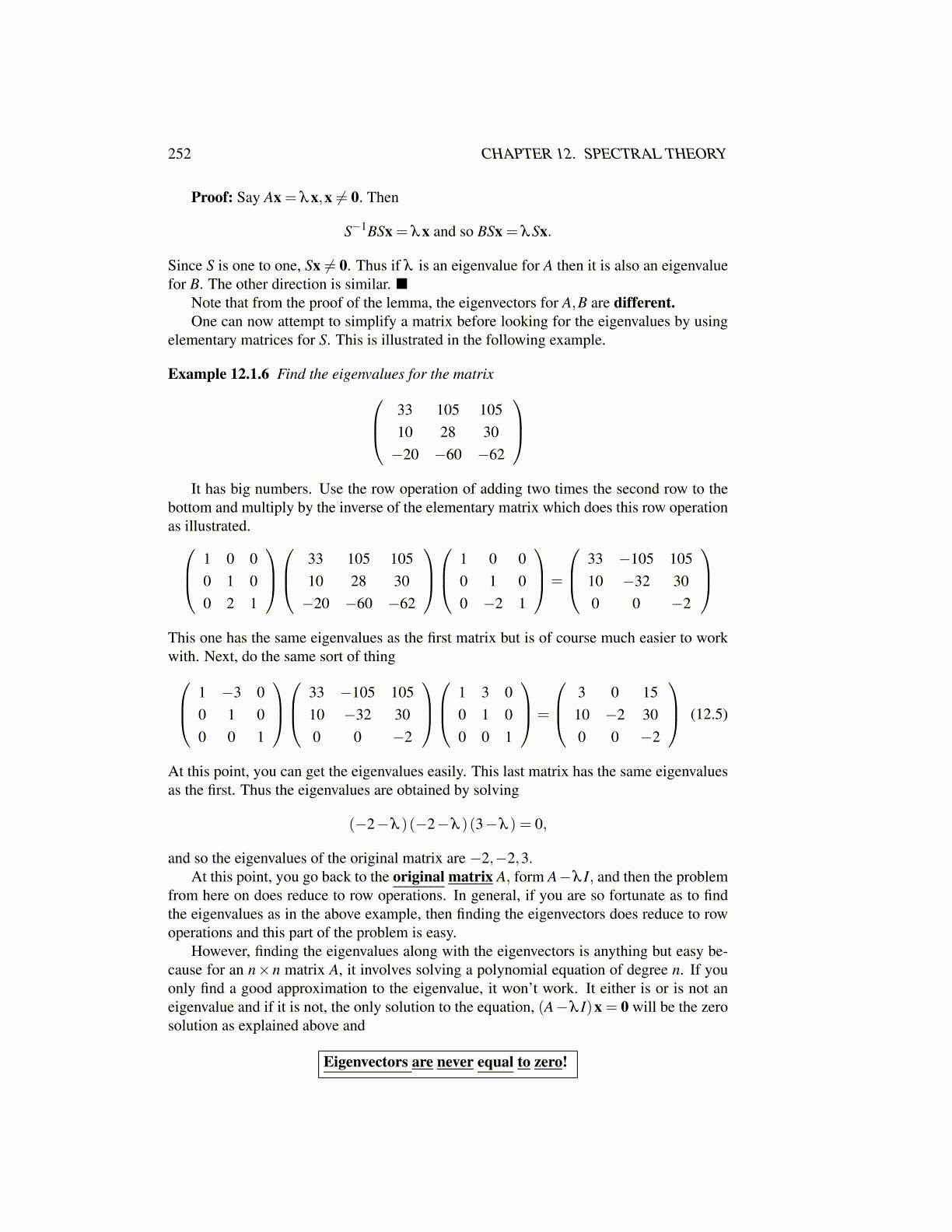
252 CHAPTER 12. SPECTRAL THEORY
Proof: Say Ax = λx,x ̸= 0. Then
S−1BSx = λx and so BSx = λSx.
Since S is one to one, Sx ̸= 0. Thus if λ is an eigenvalue for A then it is also an eigenvaluefor B. The other direction is similar. ■
Note that from the proof of the lemma, the eigenvectors for A,B are different.One can now attempt to simplify a matrix before looking for the eigenvalues by using
elementary matrices for S. This is illustrated in the following example.
Example 12.1.6 Find the eigenvalues for the matrix 33 105 10510 28 30−20 −60 −62
It has big numbers. Use the row operation of adding two times the second row to the
bottom and multiply by the inverse of the elementary matrix which does this row operationas illustrated. 1 0 0
0 1 00 2 1
33 105 105
10 28 30−20 −60 −62
1 0 0
0 1 00 −2 1
=
33 −105 10510 −32 300 0 −2
This one has the same eigenvalues as the first matrix but is of course much easier to workwith. Next, do the same sort of thing 1 −3 0
0 1 00 0 1
33 −105 105
10 −32 300 0 −2
1 3 0
0 1 00 0 1
=
3 0 1510 −2 300 0 −2
(12.5)
At this point, you can get the eigenvalues easily. This last matrix has the same eigenvaluesas the first. Thus the eigenvalues are obtained by solving
(−2−λ )(−2−λ )(3−λ ) = 0,
and so the eigenvalues of the original matrix are −2,−2,3.At this point, you go back to the original matrix A, form A−λ I, and then the problem
from here on does reduce to row operations. In general, if you are so fortunate as to findthe eigenvalues as in the above example, then finding the eigenvectors does reduce to rowoperations and this part of the problem is easy.
However, finding the eigenvalues along with the eigenvectors is anything but easy be-cause for an n×n matrix A, it involves solving a polynomial equation of degree n. If youonly find a good approximation to the eigenvalue, it won’t work. It either is or is not aneigenvalue and if it is not, the only solution to the equation, (A−λ I)x = 0 will be the zerosolution as explained above and
Eigenvectors are never equal to zero!